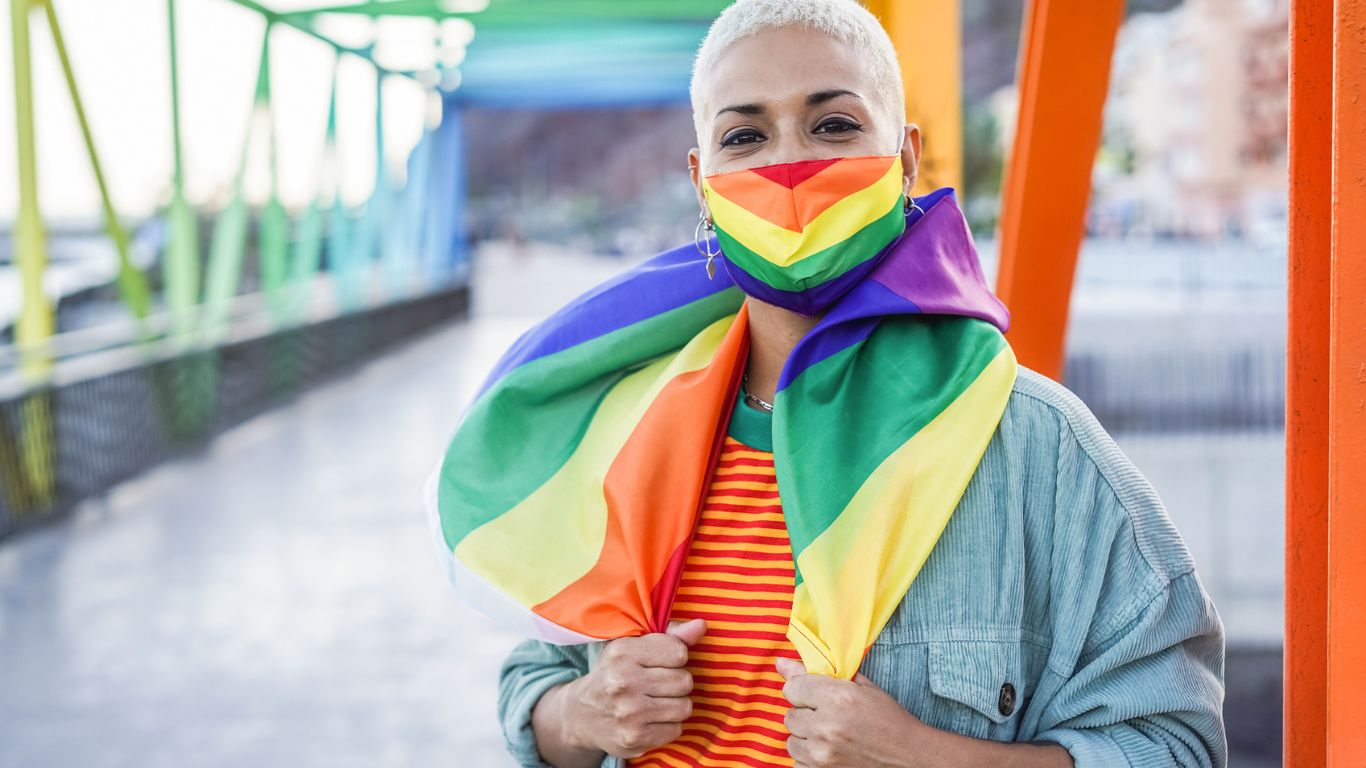
Measures put in place to prevent the spread of COVID-19 bring a unique set of challenges to LGBTQ2+ people in Canada—that is, people who are lesbian, gay, bisexual, transgender, queer, Two-Spirit, or who reported using another term that refers to sexual or gender diversity.
For instance, the 2018 Survey of Safety in Public and Private Spaces (SSPPS) found that LGBTQ2+ people in Canada, of all ages, were more than twice as likely (21%), compared with their non-LGBTQ2+ counterparts (10%), to report having lived with family or friends because they had no other place to stay.
In many cases, LGBTQ2+ youth may be forced to isolate at home with homophobic, biphobic, or transphobic family members, and alternative housing options may not be available or affordable. But, the option to live with family members may not even be available to everyone.
LGBTQ2+ people in Canada were more than twice as likely than their non-LGBTQ2+ counterparts to have experienced some type of homelessness or housing insecurity in their lifetime (27% versus 13%). People experiencing homelessness face additional risks from COVID-19 and associated complications due to barriers in access to healthcare and community resources.
In 2018, one-third (33%) of LGBTQ2+ people in Canada found it difficult or very difficult to meet their needs in terms of transportation, housing, food, clothing, participation in some social activities and other necessary expenses, compared with 27% among non-LGBTQ2+ people.
This may be due to the fact that LGBTQ2+ people in Canada generally have lower incomes and are overall more likely to experience financial insecurity than their non-LGBTQ2+ counterparts. According to the 2018 SSPPS, LGBTQ2+ people in Canada were over-represented in low income categories and were less likely than non-LGBTQ2+ people to have a total personal income above $60,000 before taxes.
In particular, a significantly higher proportion of LGBTQ2+ people in Canada (41%) had a total personal income of less than $20,000 per year compared with their non-LGBTQ2+ counterparts (26%). The average personal incomes of LGBTQ2+ income earners ($39,000) were also significantly lower than those of non-LLGBTQ2+ ($54,000) people in Canada.
Given that, pre-pandemic, many LGBTQ2+ people in Canada had lower incomes, were having difficulties meeting their financial obligations, and indicated that they would have difficulties handling unexpected expenses, they may be particularly vulnerable financially if they lost employment as a result of COVID-19.
In December 2020, Statistics Canada released a paper that further explores the inequalities in income, financial security and housing insecurity between LGBTQ2+ and non-LGBTQ2+ people in Canada that existed prior to the pandemic, using data from the 2018 SSPPS. These vulnerabilities could be exacerbated with additional stressors brought on by COVID-19.
A portrait of the transgender and non-binary populations was published in April 2022, following the initial release of 2021 Census data on sex at birth and gender. More recently, the 2021 Census data on families, households and marital status provide additional statistics and analysis on the experiences of same-gender and different-gender couples, as well as couples composed of at least one transgender person or at least one non-binary person.
Additional analysis of various sociodemographic and socioeconomic characteristics of the transgender and non-binary populations will be forthcoming once all census data are released.
Contact information
For more information, contact the Statistical Information Service (toll-free 1-800-263-1136; 514-283-8300; infostats@statcan.gc.ca) or Media Relations (statcan.mediahotline-ligneinfomedias.statcan@statcan.gc.ca).
